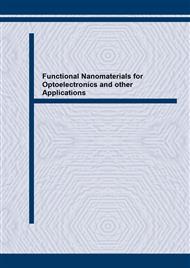p.209
p.213
p.219
p.223
p.227
p.231
p.235
p.239
p.243
Nanolevel Structuring – Design of Novel Functional Highly-Organized Solids and Materials
Abstract:
The perspectives of synthesis of highly-organized nanostructured solids and materials with various levels of microscopic organization are discussed. The synthesis and the magnetic properties of mixed Fe-Eu-oxygen groups on silica surface are given as an example. It is shown that spin arrangement ions and the appearance of two-dimensional magnetic ordering are defined to the structural induced effects of sublayer as well as the first layer composition.
Info:
Periodical:
Pages:
227-230
Citation:
Online since:
July 2004
Authors:
Price:
Сopyright:
© 2004 Trans Tech Publications Ltd. All Rights Reserved
Share:
Citation:


